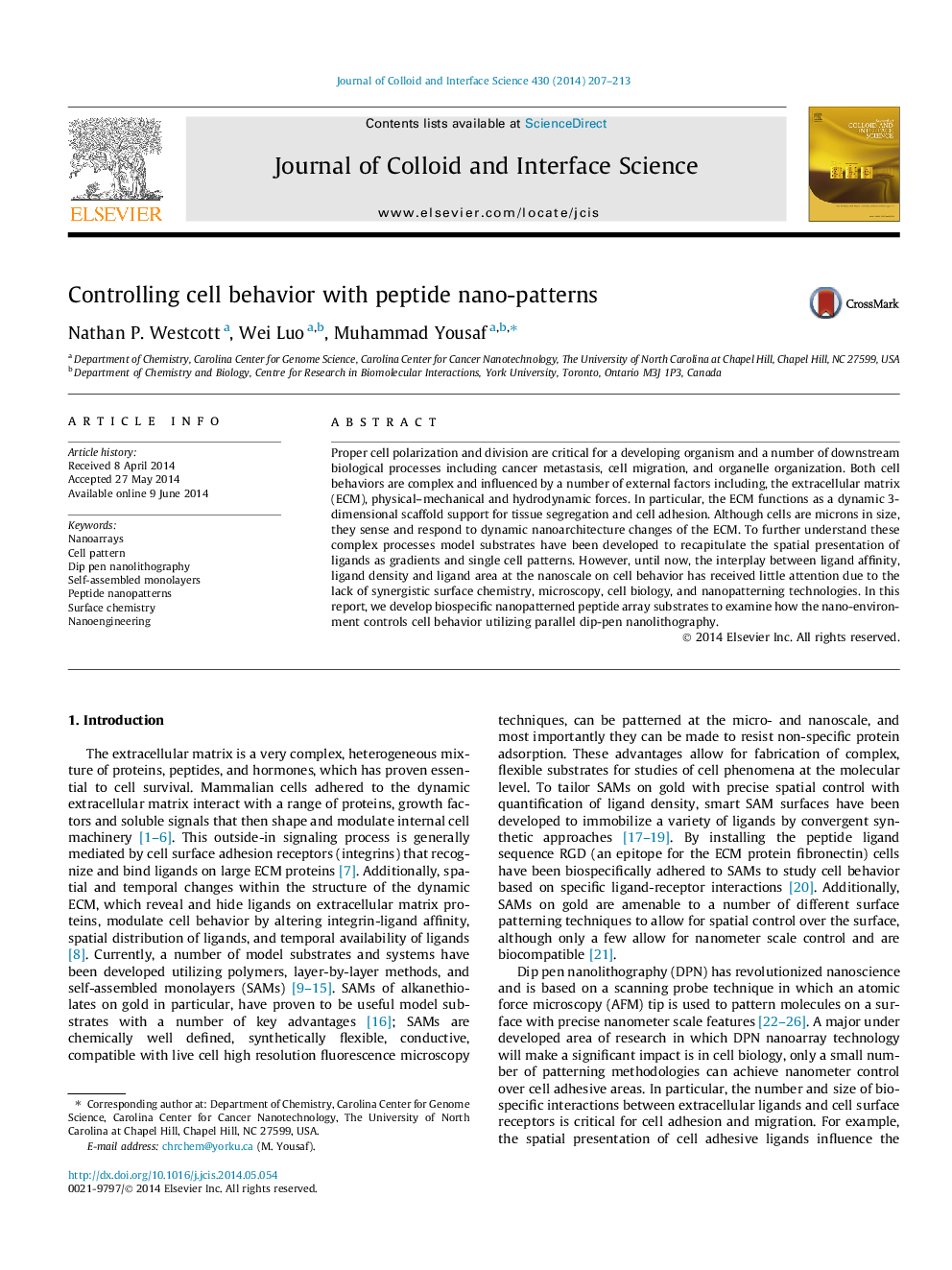| Article ID | Journal | Published Year | Pages | File Type |
|---|---|---|---|---|
| 607190 | Journal of Colloid and Interface Science | 2014 | 7 Pages |
•Engineered nano-environment has significant impact on cell behavior.•Biospecific nanopatterns were fabricated by dip-pen nanolithography.•A versatile platform with various biomolecule nanoarrays can be generated.•Ligand density and composition are crucial for directed cell polarization.
Proper cell polarization and division are critical for a developing organism and a number of downstream biological processes including cancer metastasis, cell migration, and organelle organization. Both cell behaviors are complex and influenced by a number of external factors including, the extracellular matrix (ECM), physical–mechanical and hydrodynamic forces. In particular, the ECM functions as a dynamic 3-dimensional scaffold support for tissue segregation and cell adhesion. Although cells are microns in size, they sense and respond to dynamic nanoarchitecture changes of the ECM. To further understand these complex processes model substrates have been developed to recapitulate the spatial presentation of ligands as gradients and single cell patterns. However, until now, the interplay between ligand affinity, ligand density and ligand area at the nanoscale on cell behavior has received little attention due to the lack of synergistic surface chemistry, microscopy, cell biology, and nanopatterning technologies. In this report, we develop biospecific nanopatterned peptide array substrates to examine how the nano-environment controls cell behavior utilizing parallel dip-pen nanolithography.
Graphical abstractFigure optionsDownload full-size imageDownload high-quality image (79 K)Download as PowerPoint slide
